After the days mushroom education class many of the group joined the class teachers for a walk at Salamander park. The weather was warm and dry but fresh mushrooms were in short supply. We did find quite a few crusts, conks and parchments that are very hardy and overwinter. There were a couple of fresh specimens and we were lucky enough to find one of the most brightly colored spring mushrooms, Scarlet cup. There are two very similar species of Scarlet cup, Sarcoscypha austriaca and Sarcoscypha dudleyi. The only way to tell the difference between the two is by examining the spores under a microscope. Fortunately club Mycologist Garrett Taylor came equipped with a microscope and portable light source. A few minutes later he was viewing the spores and determined that we had found the Sarcoscypha austriaca species.
There were three other interesting finds, the polypore Daedaleopsis septentrionalis and an unknown crust mushroom that was growing over sticks and bark and actually gluing the substrate together, and a harry specimen growing on a stick. Daedaleopsis septentrionalis is related to Daedaleopsis confragosa, commonly known as the thin walled maze polypore. The pore shape is elongated in Daedaleopsis septentrionalis with very few cross walls and hence not so maze like. The pore surface will bruise pinkish-brown in fresh specimens of both species. Daedaleopsis septentrionalis only grows on Birch wood while Daedaleopsis confragosa grows on many hardwood species including Birch. The unknown crust mushroom is still unknown and there are a few pictures of it below. And the final specimen was a rather cool looking harry specimen growing on a stick. It is thought that it belongs to the genus Helmenthosporium although a full identification has not yet been made.
Species list entered by Richard Jacob. Species identified by Fluff Berger, Richard Jacob, John Plischke III and Garrett Taylor.
List of species found on the walk at Salamander park:
[icon style=”camera”] Armillaria gallica (Honey Mushroom),
[icon style=”camera”] Cerrena unicolor (Mossy Maze Polypore),
[icon style=”camera”] Ganoderma applanatum (Artist’s Conk),
[icon style=”camera”] Irpex lacteus (Milk-white Toothed-Polypore),
[icon style=”camera”] Kretzschmaria deusta (Carbon Cushion, Brittle Cinder),
[icon style=”camera”] Phellinus robiniae (Cracked cap polypore, Locust polypore),
[icon style=”camera”] Polyporus badius (Black-footed Polypore),
[icon style=”camera”] Polyporus varius (),
[icon style=”camera”] Poronidulus conchifer (),
[icon style=”camera”] Sarcoscypha austriaca (Scarlet cup),
[icon style=”camera”] Schizophyllum commune (Split Gill),
[icon style=”camera”] Stereum complicatum (Crowded Parchment),
[icon style=”camera”] Stereum ostrea (False Turkey-tail),
[icon style=”camera”] Trametes elegans (),
[icon style=”camera”] Trametes versicolor (Turkey-tail),
[icon style=”camera”] Xylobolus frustulatus (Ceramic Parchment)
Species not currently on clubs life list:
[icon style=”camera”] Daedaleopsis septentrionalis ()
Comments:
Microscope used to ID Sarcoscypha austriaca from the spores.
Photos by Sarah Amelia, Cecily Franklin, Richard Jacob and Garrett Taylor.
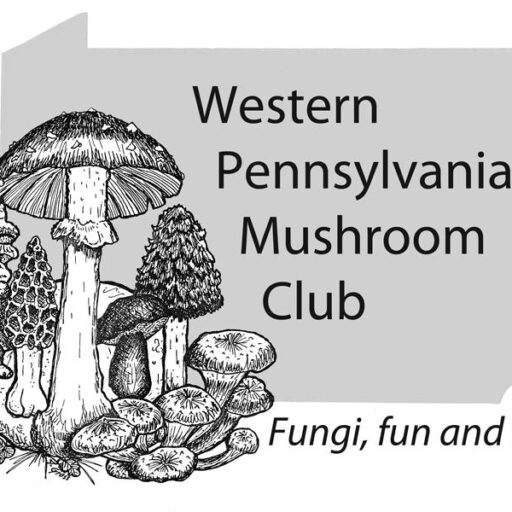
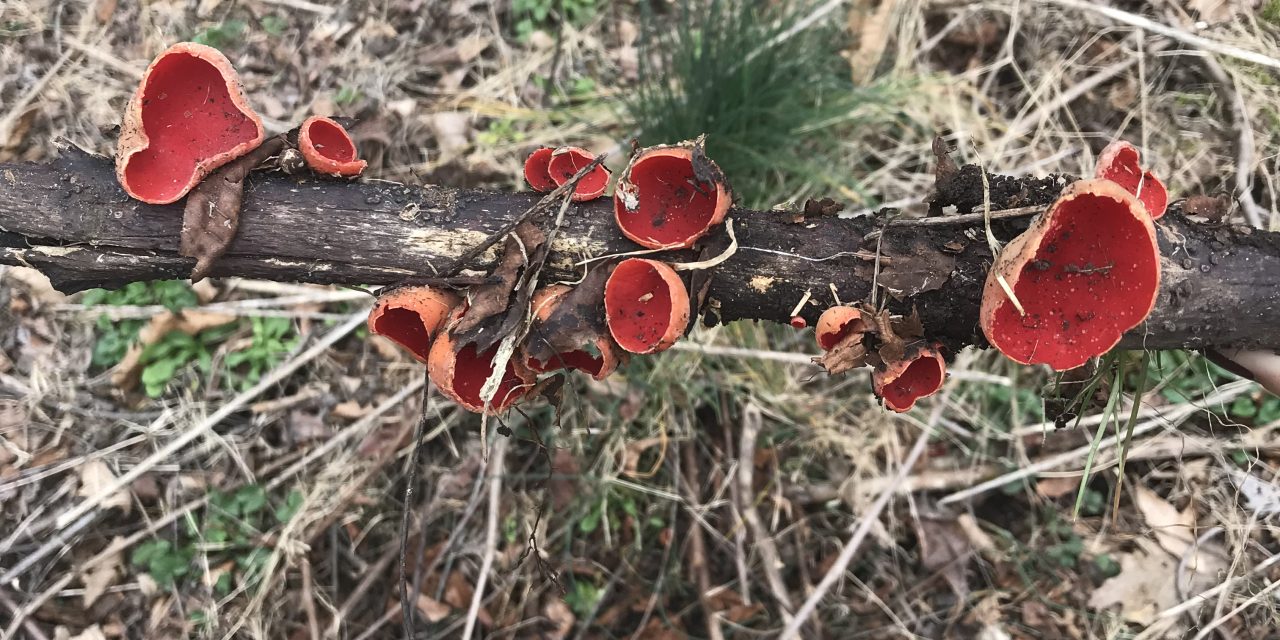


























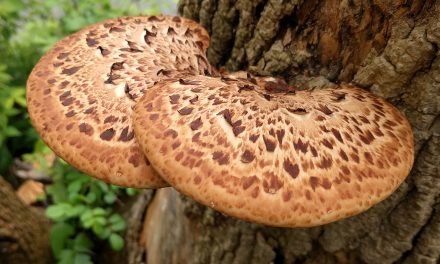
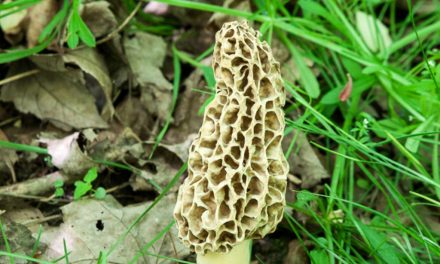
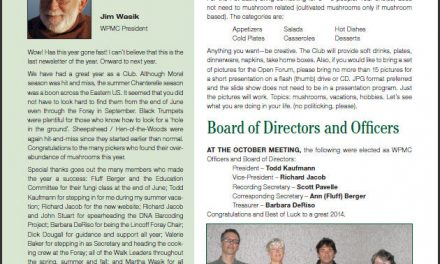
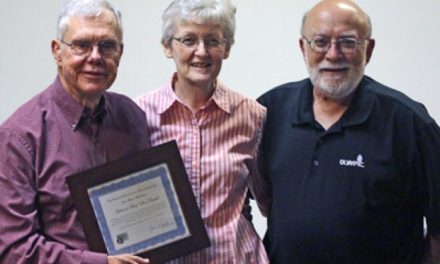

The mystery crust appears to be Hymenochaete corrugata, Glue Crust. Its claim to fame is its ability to glue branches together, allowing the fungi to transfer to the next tree. It starts out gray, and eventually develops a black coating they say is waterproof. I found a specimen today gluing a 3″ branch to a 6″ plus log, and I could not break the bond. Glue Crust is on Gary Lincoff’s crust page on his website as one of the common Central Park crusts.